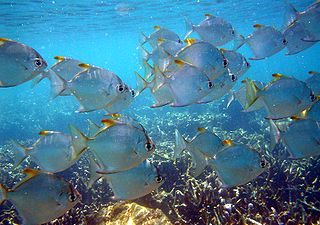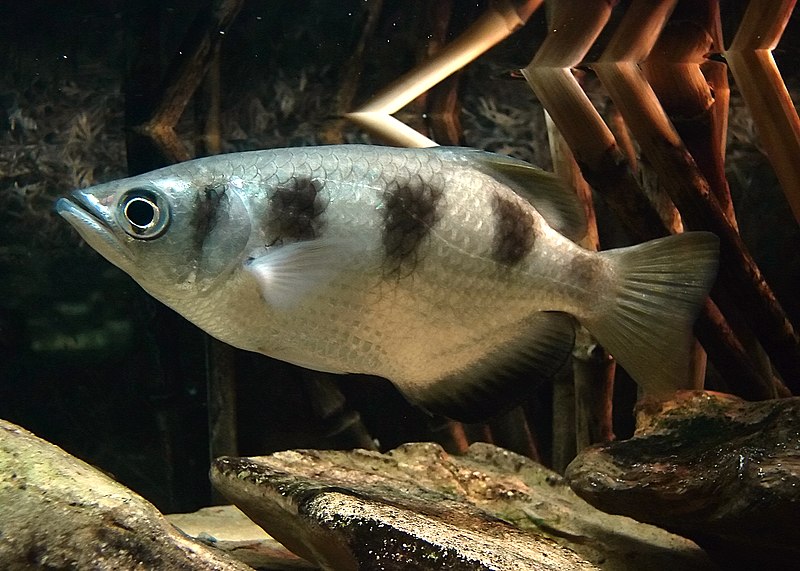Hello, Frank Indiviglio here. This Southeast Asian fish’s slender, 3-inch- long body belies its reputation as a fearsome combatant. However, in betting parlors from Thailand to the Sunda Islands, matches between male wrestling halfbeaks (Dermogenys pusilla/pusillus) rival those featuring the better-known bettas (Betta splendens) in popularity. In contrast to bettas, battling halfbeaks rarely inflict any serious damage…other than to the billfolds of losing gamblers!
Description and Habitat
Halfbeaks sport a startling adaptation to surface feeding…their immobile lower jaw is more than twice the length of the upper. This, along with their subtle beauty – a silvery body highlighted by hints of blue and green – renders them a most unique addition to one’s collection.
Halfbeaks inhabit estuaries and other areas of fluctuating salinity, and, while sometimes kept in fresh water, are at their best in brackish water aquariums.
Feeding Wrestling Halfbeaks
Halfbeaks are highly specialized surface feeders and rarely if ever swim to lower depths in the aquarium. They tend to be picky feeders and prefer tiny live invertebrates such as mosquito larva, brine shrimps, fruit flies and Daphnia. Chopped blackworms may be taken, but these sink quickly and so must usually be offered via forceps (tedious but effective!).
Halfbeaks may be habituated to flake and frozen foods, but the progeny of such fishes rarely reproduce, most likely due to a nutritional deficiency.
The Halfbeak Aquarium
While visiting pet stores and aquariums in Japan, where halfbeaks are more commonly kept than in the USA, I was surprised to find that multiple males were often housed together. I learned that males will co-exist in large, well planted aquariums if emergent and surface-dwelling plants are grown as sight barriers. Watching the threat displays and interactions in such aquariums was most interesting, and cast these little fellows in a new light for me.
A unique habitat preference and feeding style dictates that halfbeaks be kept in long, shallow aquariums and, with few exceptions, in single-species groups.
Breeding Halfbeaks
Wrestling Halfbeaks are live bearers, with healthy females giving birth every 30 days or so; males may be distinguished by a bright red blotch located in front of the dorsal fin.
Unfortunately, adults are quite cannibalistic, and the fry rarely survive. Breeding traps are not recommended, as the birthing process takes several days and females become stressed by long confinement in small areas. Thickly-planted aquariums, with much of the vegetation at the surface, offer the best chance of success.
Further Reading
Detailed information on the natural history of these and related fishes is posted at ZipCodeZoo.com.
A book I’ve written, The Everything Aquarium Book, addresses the care of brackish water fishes in detail.
Please write in with your questions and comments.
Thanks, until next time,
Frank Indiviglio
Halfbeaks image referenced from wikipedia and originally posted by Neale Monks
 That Fish Blog – Aquarium Advice and Information
That Fish Blog – Aquarium Advice and Information


